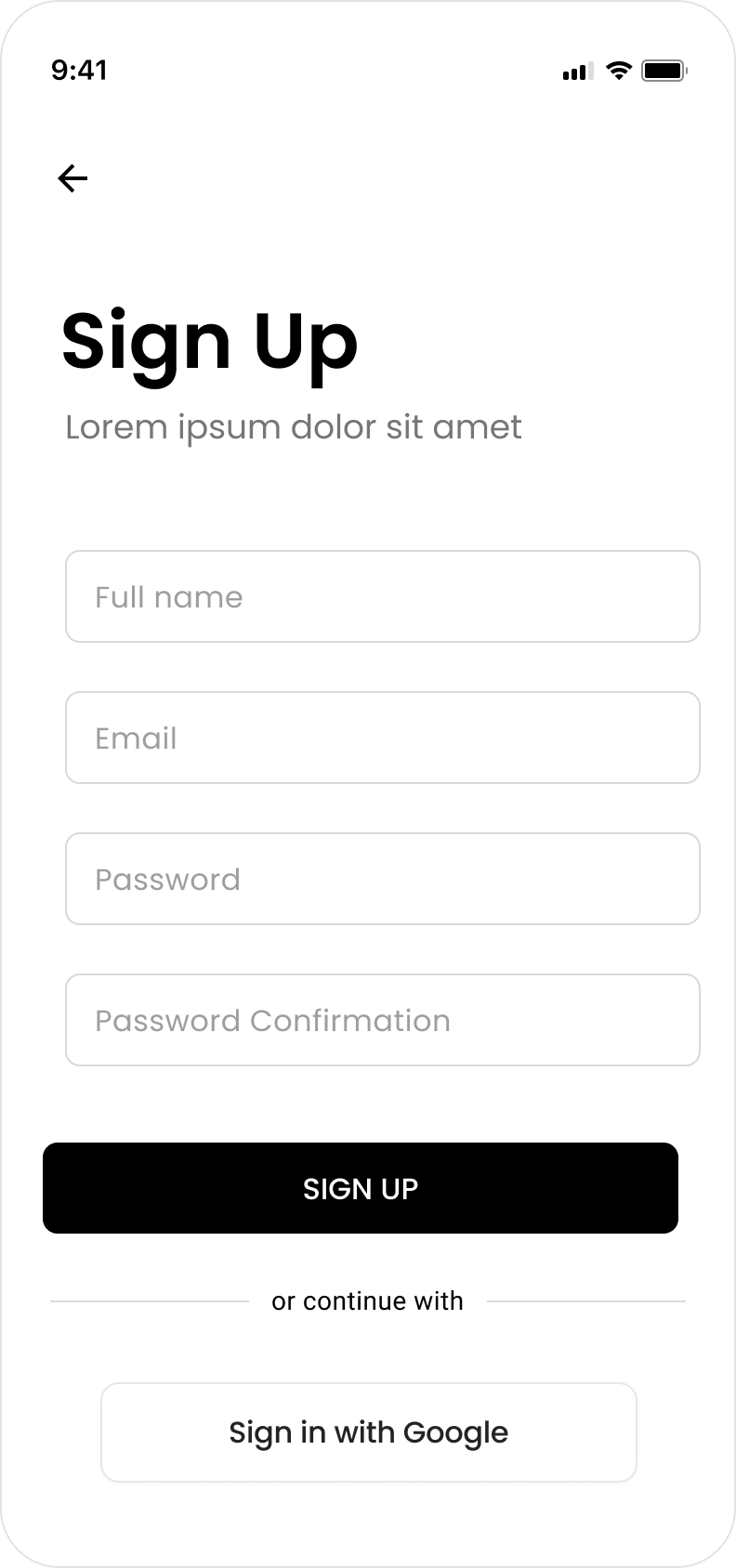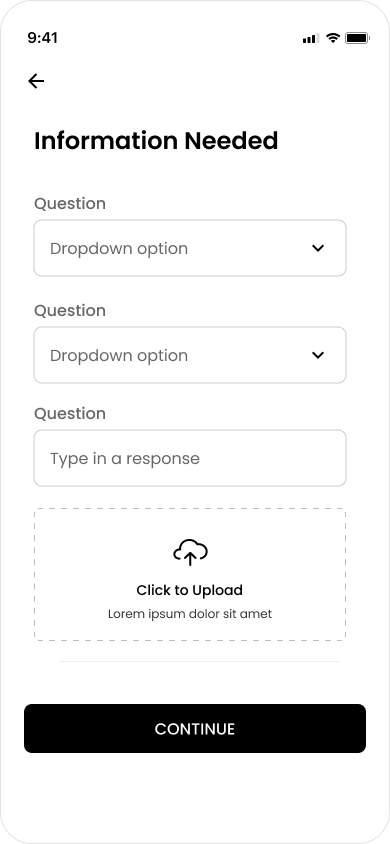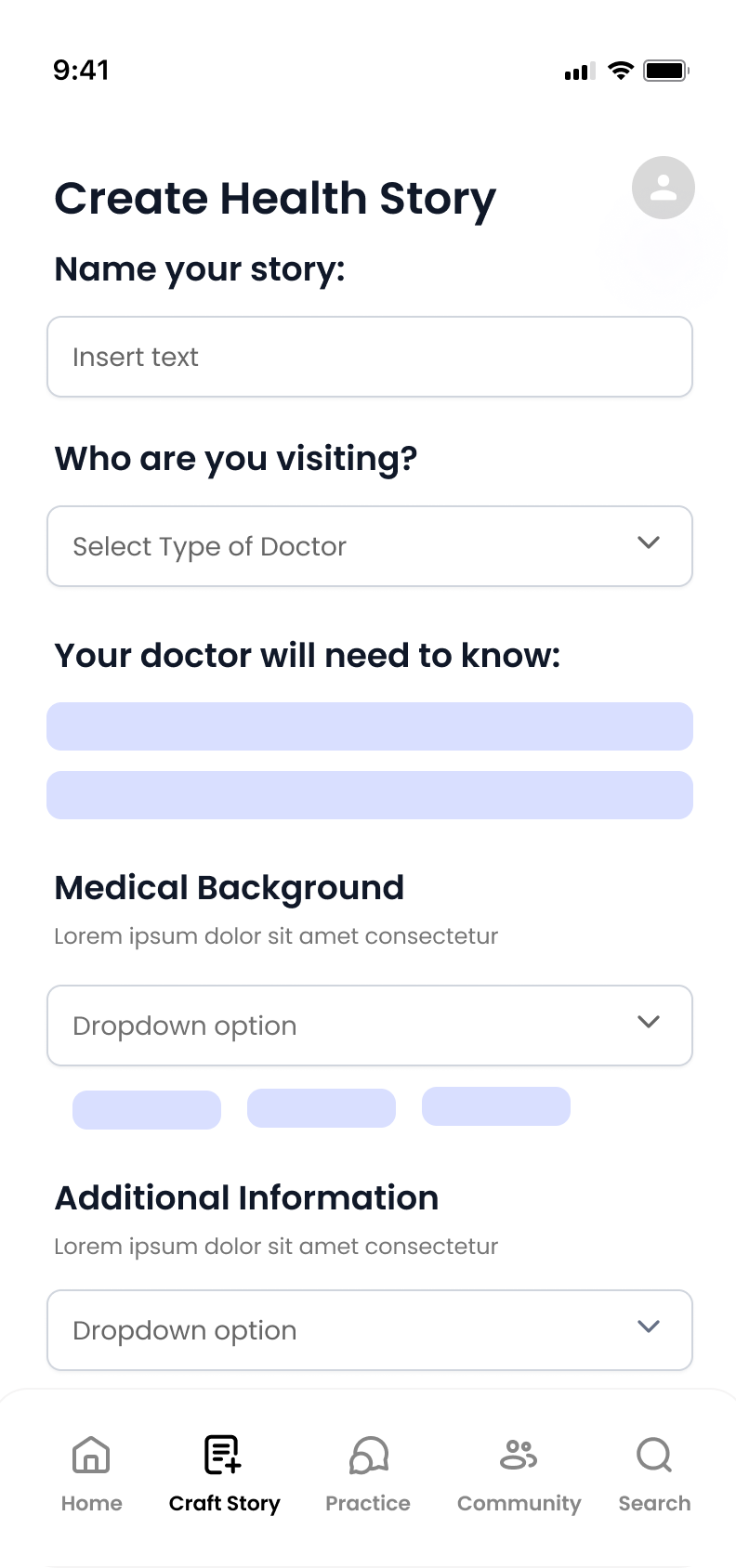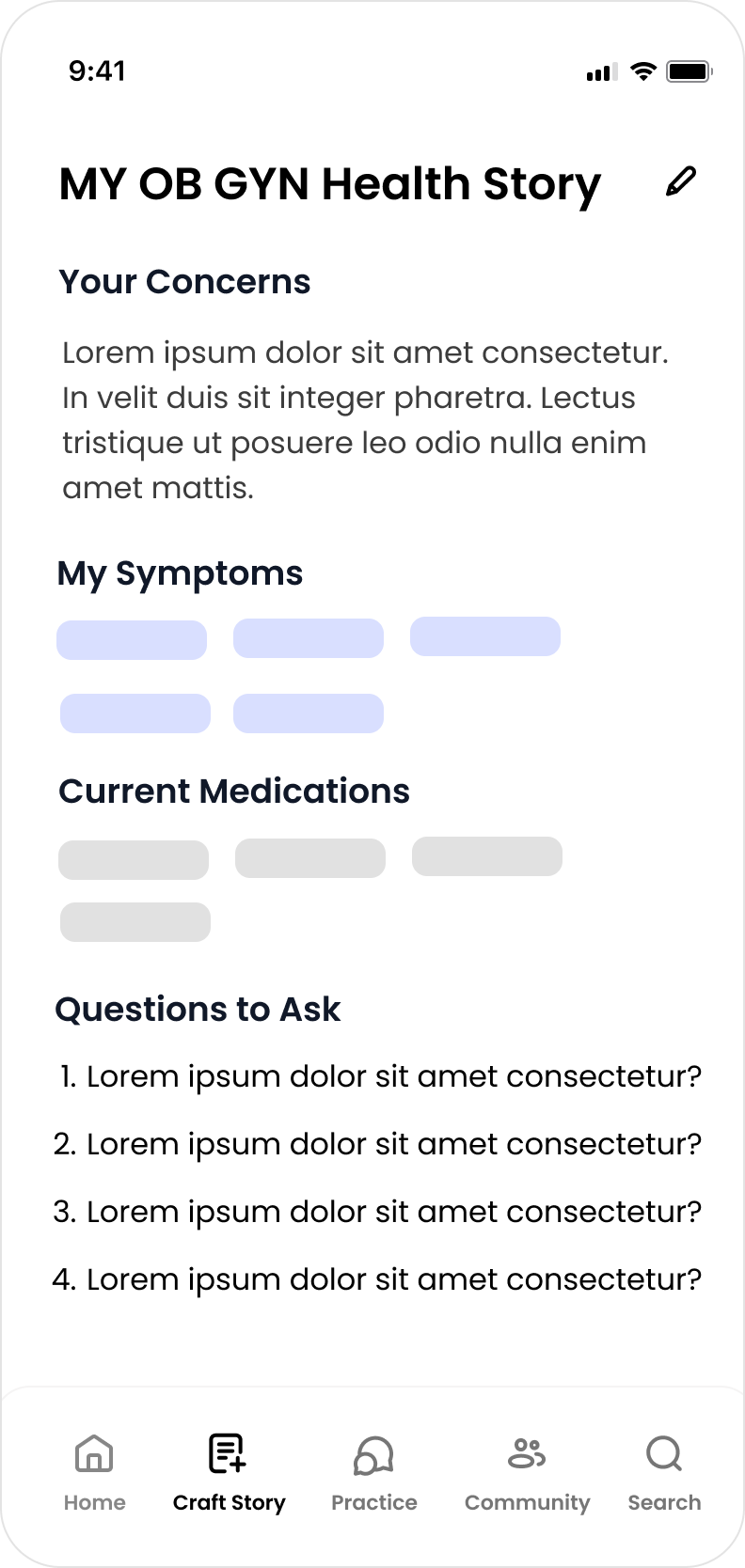Project HEAL
Project HEAL is a healthcare application designed to empower women with the knowledge and tools needed to make informed medical decisions and confidently navigate their healthcare journey.
Role
Product Lead
UX Researcher & Designer
Timeline
January - September 2024
Tools
Figma
Miro
Founders Story.
Maya’s dad is a Harvard educated lawyer and her mom was a Stanford professor. When both of her parents got diagnosed with cancer, they could not understand what their doctors were telling them, despite their pedigrees.
Brianna is a first-generation college student from a low-income background. When her grandmother was diagnosed with cancer, she, her mother, and her aunt worked together as a team to research, take notes, and ask medical questions.
However, when they requested a specific medical procedure, they struggled to advocate for it resulting in frustration when met with resistance .
The Problem.
A lack of health literacy prevents patients from being seen or heard by their provider, and patients default to the status quo, even if they disagree with the suggested treatment pathway.
This leads to poor medical adherence and outcomes, and increases the likelihood that patients will avoid the medical system.
The Solution.
Healthcare Stories
Users search for modules on their diagnosis, and filter by difficulty level and media type. Users can take notes, save modules, and highlight key information for easy reference.
Users prepare for doctor visits by practicing answering common questions and communicating health concerns with an AI chatbot.
88%
of US adults are not health literate, and don’t understand unfamiliar, complex, or jargon filled information.
22.5 million
women of color within reproductive age in the US are on Medicaid; 35% with less than a high school diploma.
1 in 6
Learning Modules
women report mistreatment in their healthcare experience, with higher rates amongst women of color.
Appointment Simulation
Users track symptoms, treatment history, prescriptions, and provider questions, ensuring they share relevant information with the right doctors.
Interviews.
We developed two interview scripts: one for providers and one for patients. These scripts focused on understanding:
Patients challenges with diagnosis comprehension and self-advocacy
Identifying the information and language medical providers need to better understand patients
In three weeks, we recruited and conducted interviews with 15 patients who identify as BIWOC and have women-exclusive health conditions, and 10 Front-Line Health Providers & Staff.
Patient Discovery Goals
Understand how patients make healthcare decisions and where they seek information to shape their decisions.
Map the patient journey and understand their perceptions of interactions with providers.
Explore how patients advocate for themselves and identify challenges they face in the healthcare system.
Evaluate how well patients understand doctors' guidance and their ability to relay information and take action.
Provider Discovery Goals
Understand current tatictics providers use to help patients understand and take informed action on their care.
Examine how providers “negotiate” with patients to meet them where they are and encourage self-advocacy.
Explore how well providers know their patients beyond the clinical setting and how this influences care.
Understand how providers navigate healthcare for family and friends and how it differs from their approach to patient care.
Affinity Map.
What We Heard.
“Pushing back against authority is tough. I always had the attitude that this is the doctor, they’re educated, they know best; Even though I know my body best.”
“Depending on which doctor I see, there’s a different portal where my information is housed; not all of it communicates with each other”
“I want a level of control and to understand why a treatment may or may not be the right approach.”
“Post visit notes are usually a quick summary and don’t provide details of what happened in the room and don't capture what questions patients have nor what options were discussed”
“If I had a longer established relationship, I feel like I would have more tailored guidance from my doctors.”
“I’m not someone who's 100% trusting, I need multiple channels of information to make an informed decision and it takes a lot of hours to gather the right information”
Sketches.
Wireframes.
Feature Deep Dive.
Healthcare Story
1. Creating a Story
Create a concise story of your symptoms, concerns, and history to effectively communicate with your doctor.
2. Generated Questions based on Doctors
Receive a tailored list of potential questions your doctor may ask based on their specialty (e.g., a gynecologist may ask about menstrual history, while a cardiologist may focus on heart-related symptoms).
3. Document Important Medical History
Store and organize key health details, including past diagnoses, medications, allergies, and family medical history, for easy reference during appointments.
Appointment Simulator
1. Chatbot Practice
Simulate a conversation with a virtual chatbot using both audio and text to practice discussing symptoms, concerns, and questions before doctor visits.
2. Feedback on Communication
Receive guidance based on key medical terms and preferred explanations that doctors find most helpful for accurate diagnosis and treatment.
Learning Modules
1. Search for Health Modules
Easily find relevant health topics and educational materials to learn more about symptoms, conditions, and medical procedures.
2. Customizable Filters
Sort modules by media type (videos, articles, infographics) and learning level (beginner, intermediate, advanced) for a tailored experience.
3. Interactive Learning Tools
Highlight key information, save important notes, define medical terms, and hear correct pronunciations via audio.
Final Design.
Take a look into the final screen designs for the MaizeMate application.
Demo Gallery.
Demo Day Feedback.
Next Steps.
Conduct Usability Testing
Conduct testing to solicit additional feedback across user groups to ensure the platform actually increases cross communication, health literacy, and feelings of agency.
3. Incorporate Demo Day Feedback
Implement feedback and suggestions from Demo Day to refine the design and proposed concepts. Use feedback to determine how to design for other user groups (e.g., providers and caretakers)
2. Host Focus Group Sessions
Gather insights on the potential value of an online community by hosting community group sessions with users to understand how they form health communities and facilitate discussions.
4. Collaborate with Legal and Provider
Work with legal experts to ensure compliance with HIPPA and medical law. Continue to engage with healthcare providers to determine how to facilitate communication between providers and patients.





































